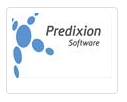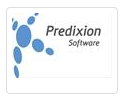 Predixion released 4.0 of Predixion Insight in October 2014 and I got a product update recently. First, some quick background on Predixion: They started back in 2009 based in California and Washington and recently added an office in Europe. 70 employees now with a core set of partners and investors. Their focus is on making it easier for business users to benefit from predictive analytics.
Predixion released 4.0 of Predixion Insight in October 2014 and I got a product update recently. First, some quick background on Predixion: They started back in 2009 based in California and Washington and recently added an office in Europe. 70 employees now with a core set of partners and investors. Their focus is on making it easier for business users to benefit from predictive analytics.
 Predixion released 4.0 of Predixion Insight in October 2014 and I got a product update recently. First, some quick background on Predixion: They started back in 2009 based in California and Washington and recently added an office in Europe. 70 employees now with a core set of partners and investors. Their focus is on making it easier for business users to benefit from predictive analytics. Ease of use and deployment at the front line of an organization – at the point of decision – is a central focus and Predixion positions itself between tools designed for data scientists and black box analytic applications for business users, aiming to deliver the best of both worlds.
Predixion released 4.0 of Predixion Insight in October 2014 and I got a product update recently. First, some quick background on Predixion: They started back in 2009 based in California and Washington and recently added an office in Europe. 70 employees now with a core set of partners and investors. Their focus is on making it easier for business users to benefit from predictive analytics. Ease of use and deployment at the front line of an organization – at the point of decision – is a central focus and Predixion positions itself between tools designed for data scientists and black box analytic applications for business users, aiming to deliver the best of both worlds.
The functionality in 4.0 was directed in large part by their partnerships with Accenture and GE and the needs of these partners’ data science teams. Key elements of 4.0 include:
- An ability to leverage existing assets in R.
- Combining structured and unstructured data.
- Improved visualizations for immediate feedback while working with data.
- Improved collaboration for data science teams, all based on HTML 5 for mobile, multi-platform use.
- MLSM packages for “deploy anywhere” flexibility including libraries for Java, .Net and in-database execution (SQL Server, Cloudera and Pivotal so far) or directly on to devices, machines or in complex event processing (or CEP) systems. Solution accelerator for rapid prototyping.
The product remains focused on its Machine Learning Semantic Model (MLSM), which encapsulates the workflow of an analytic model from schemas to transformations, data selection and sampling, modeling, validation and transformation. The MLSM is designed to enable portability as well as repeatability.
Predixion Insight 4.0 has three elements: Predixion Insight Server, Predixion Insight Workbench and Predixion Insight Explorer. From a development perspective, Predixion Insight Workbench 4.0 still operates as a ribbon inside of Excel, allowing all the usual Excel functions in addition to the ones added by Predixion. Data can be selected from Excel, PowerPivot, Hive, SQL Server etc and any additional data sources can be defined on the server and then be available in the environment. Samples are loaded automatically for visualization (though the whole dataset is manipulated on the server in the end) and immediate statistics are provided on the data being viewed (distributions, metrics, missing data etc). Binning, normalization, outlier removal and other transformations can be immediately applied to create new columns. All this is done in a very Excel like way as before.
In 4.0, multiple datasets can be opened as Excel tabs so that multiple tables from multiple sources can be manipulated. Multiple datasets can be combined into an analytical dataset even if they are from different sources. Rows in one dataset can be nested or linked as appropriate to create a combined dataset. Predixion automatically resamples to make sure it has linked data and redisplays all the statistics etc. All the transformations and joins are kept as part of the semantic model and multi-dimensional datasets can be created and managed.
R scripts can be included in packages simply by running a wizard to find the script(s), select the main script, tell Predixion what kind of data the script uses and specify parameters. Once loaded, the script can be applied to any dataset, picking the data to be used and any parameters and running it on the server as with all Predixion code. The R code can create new data for inclusion or display results that are then embedded in the HMTL output options in the Workbench and Explorer.
Predixion Insight Explorer is a completely thin client, HTML 5 based environment that gives access to existing models and datasets in packages. It has a set of exploration tools to visualize and manipulate data and models in these packages. Users of the Explorer can comment on the package for all other collaborators and new visualizations can be saved and pinned. All the included transformations are transparently described. As with Workbench, Explorer can use multiple datasets, R scripts etc etc.
4.0’s API is now a full REST API that allows access to all the server functionality. Visual macros defined in the tool can be copied to a JSON script that uses the API to create a result. Everything in the environment is either available through the API as a function or has been defined using Visual macros that leverage the API. This allows the development of applications using the Predixion server without relying on the Excel environment as 100% of the server functionality is available through the API.
The Predixion Solution Accelerator in 4.0 allows for rapid creation of predictively enabled web applications. Using templates and a metadata driven schema it makes it easy to build a solution wrapped around a predictive model, optionally with third party interfaces from Tableau to Salesforce.com. Applications can be rapidly configured using a UI to set the parameters to drive the application’s UI. The UI can be interactive, accessing the packaged analytics to drive a UI.
The product comes in a Personal, Professional and Enterprise Editions with multiple users, on-premise and collaboration coming in the Professional while larger numbers of users, API, solution accelerators and in-database in the Enterprise Edition.
Predixion is one of the vendors in our Decision Management Systems Platform Technology Report and more information on Predixion 4.0 is available here.






